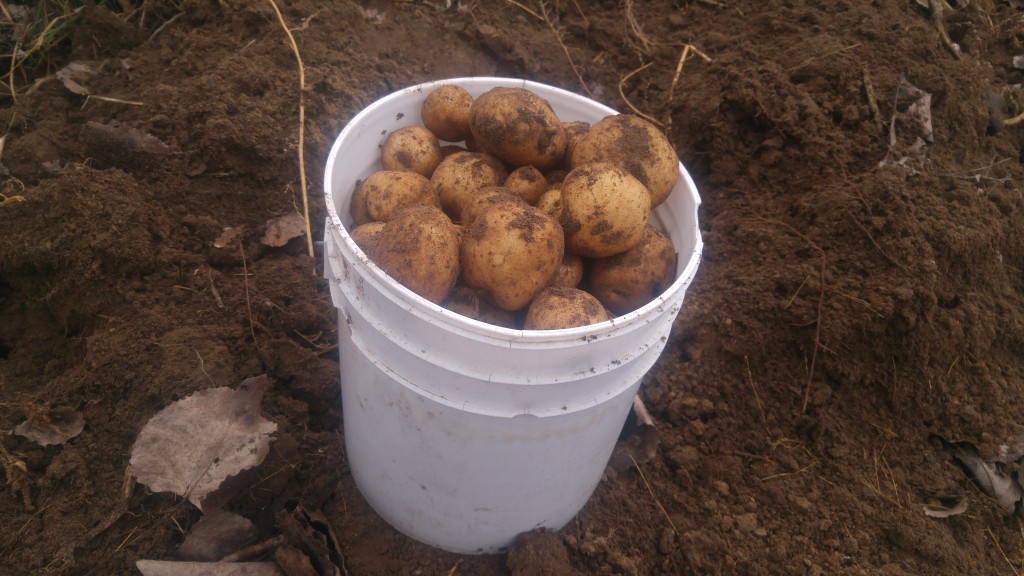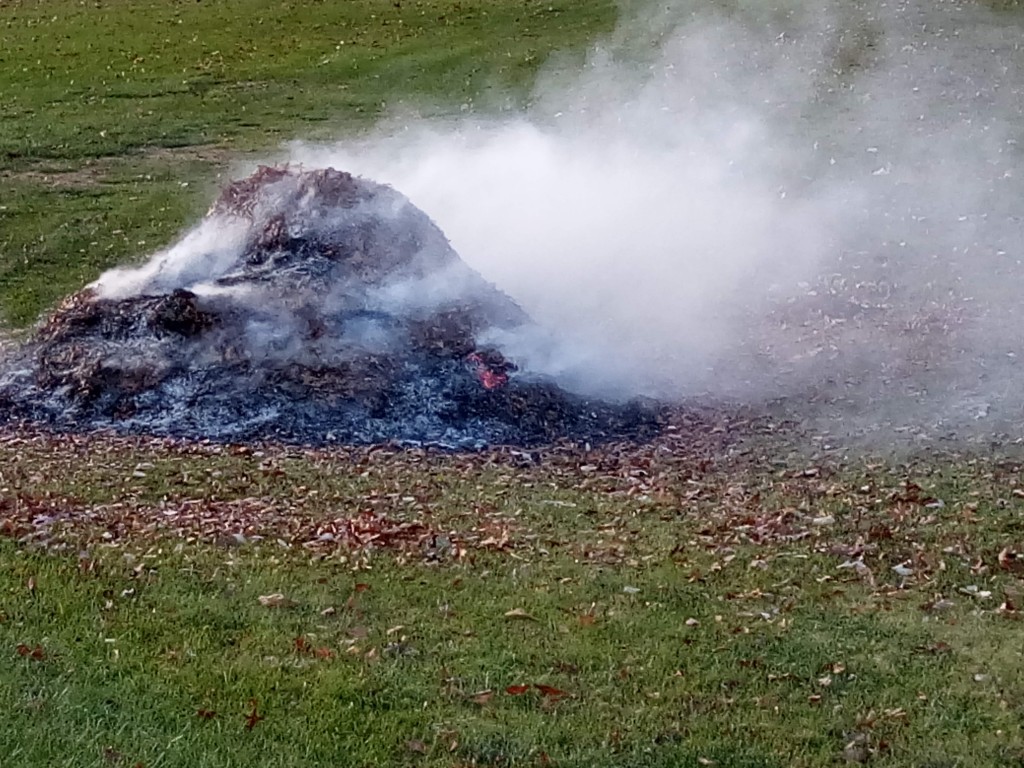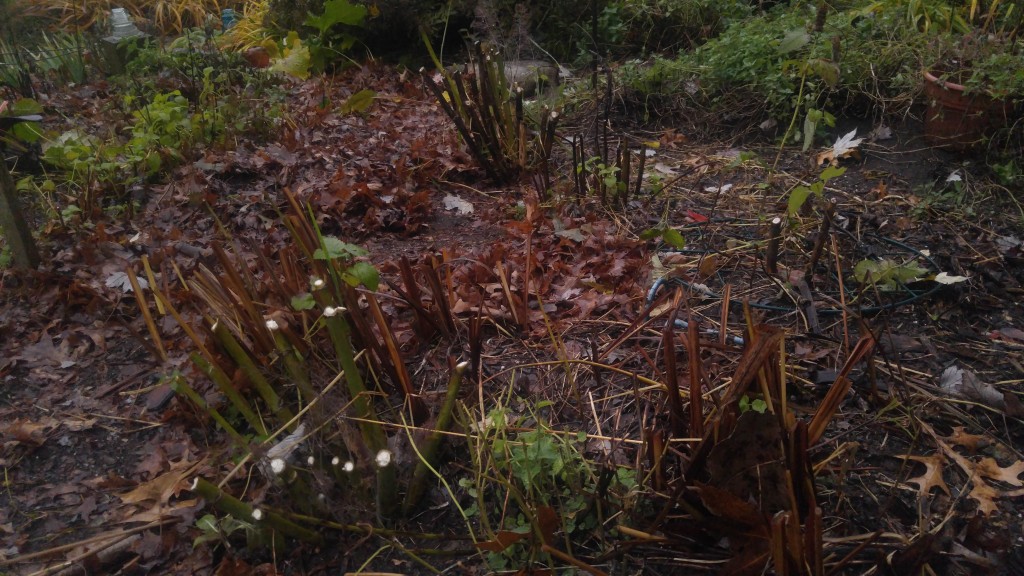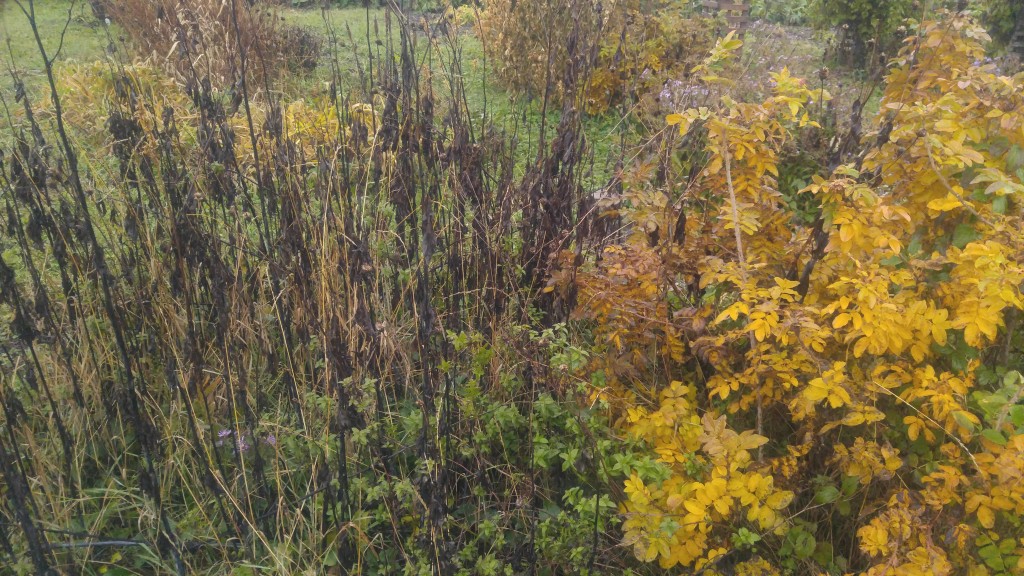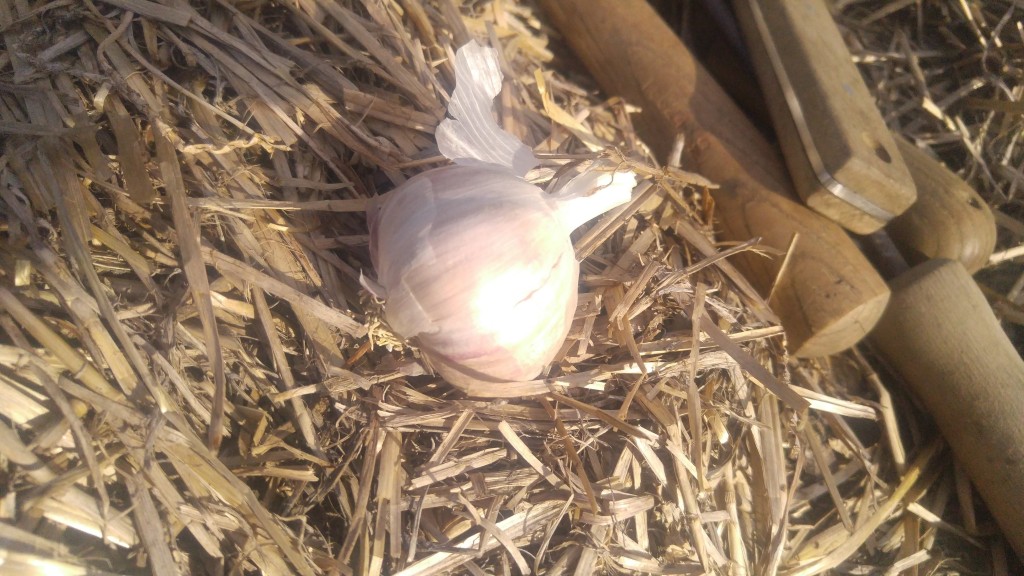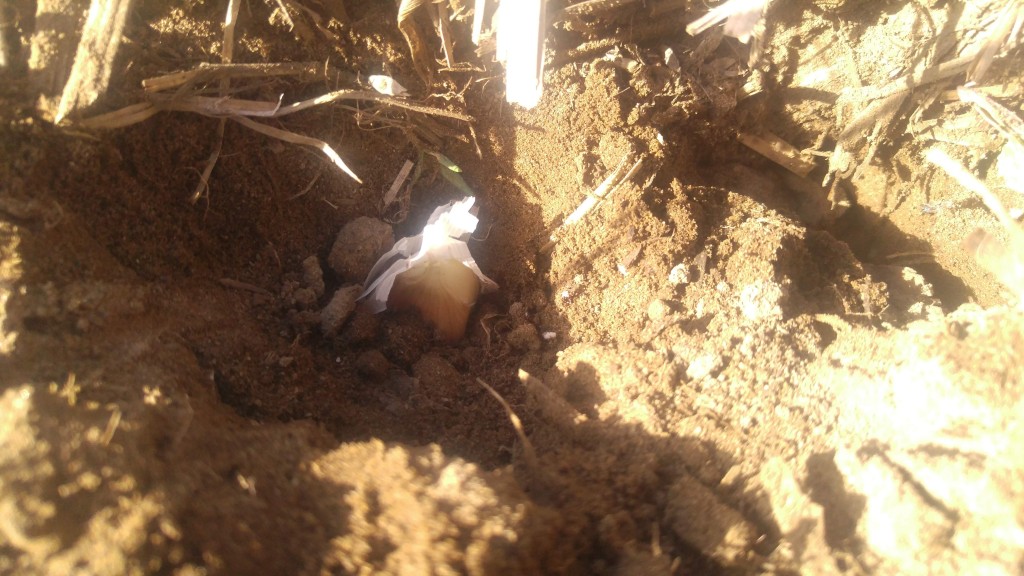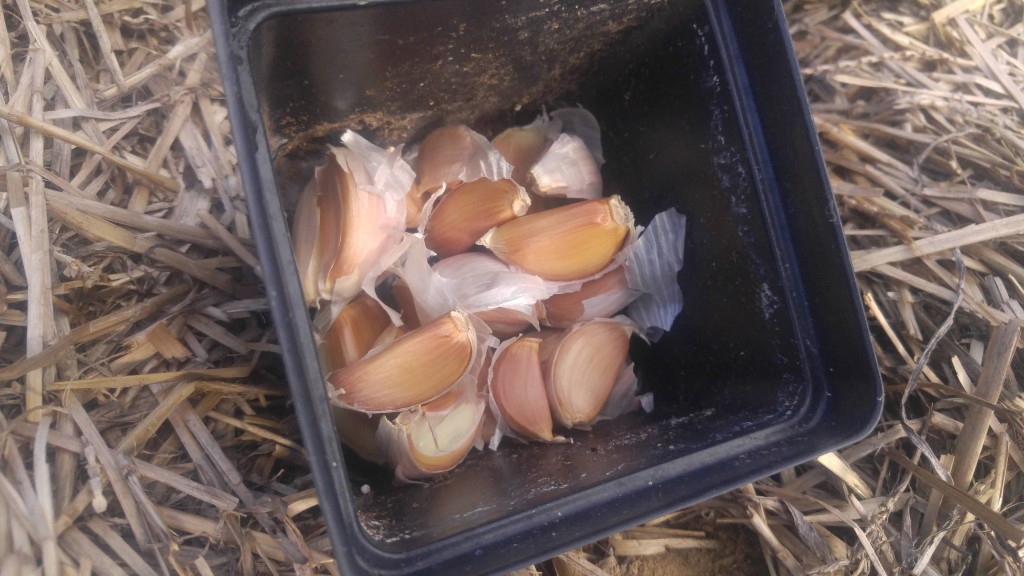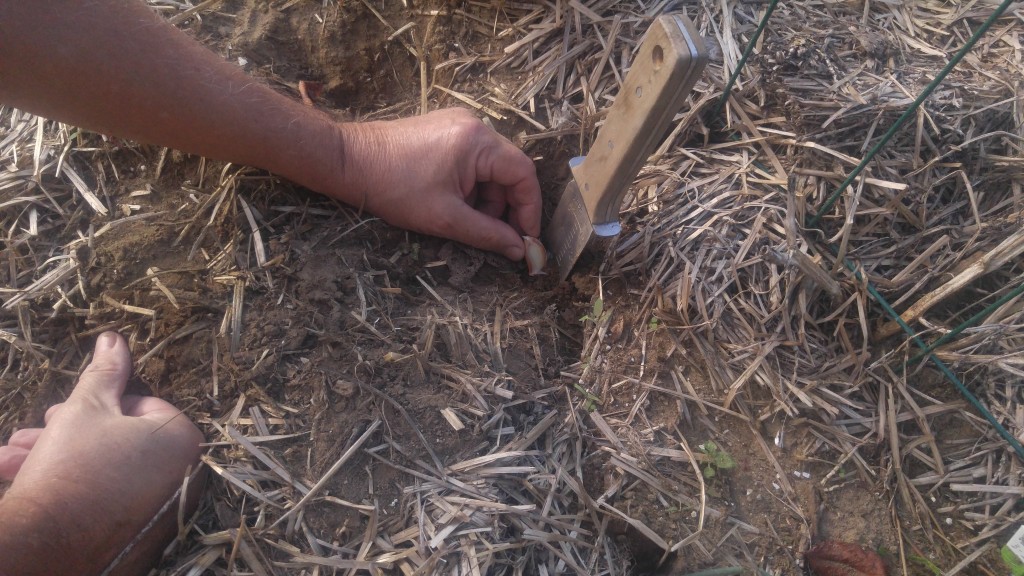Earlier this week I was out working in my vegetable garden. I finished off the season by digging the last of my potatoes.
Since we’ve had a cold November, I was somewhat concerned about the shape they might be in. Now, I have occasionally found potatoes in the spring that have gone through an entire winter with no apparent damage so my concerns were not that great. On the other hand, I’ve had potatoes freeze over winter and ended up frost damaged tubers that were completely unusable. I debated whether or not to even bother with them since I had so many other things on my plate with the Holiday season ramping up.
On Sunday the weather was more seasonal so I got out my garden fork and dug into the first row. The potatoes were in perfect shape and the yield looked promising too. This was the patch of “near no-till” potatoes I blogged about this spring.
The ground had a covering of tree leaves that I’m sure helped insulate the soil. There must have been enough residual heat stored in the ground to keep the soil around the potatoes from solidly freezing despite the fact we had temperatures down into the teens and frozen soil at the surface. I didn’t check the soil temperature but it was probably in the mid to upper thirties which is close to the ideal storage temperature for potatoes.
The yield was halfway decent, maybe a little on the low side, but that was because of nearby trees competing with the potatoes for light and water. Plus, I never irrigated this patch but it did have a layer of dried grass mulch that helped conserve the soil moisture.
All in all, I call it a successful experiment. My “no-till plus mulch” combination along with an inadvertent late harvest worked out well. If you are thinking the potatoes you left out in the garden are a lost cause, I suggest you try digging them even though these’s snow on the ground, you may be pleasantly surprised by what you find.
Bob
